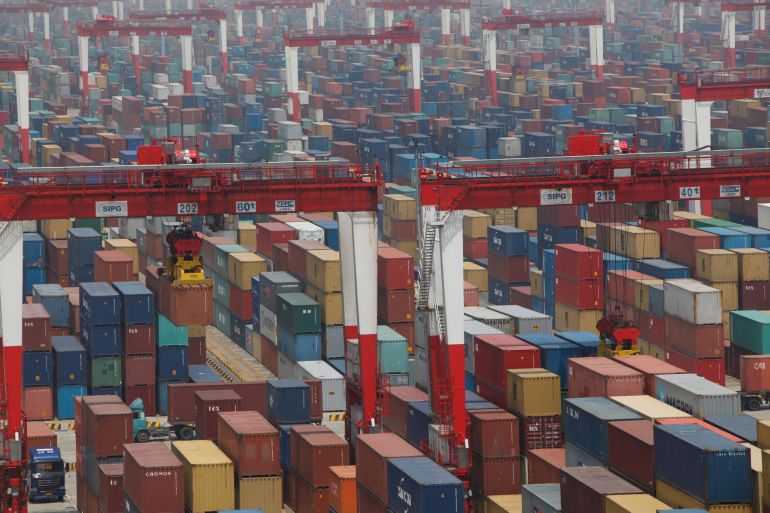China’s trade plunges to lowest level since 2020 amid COVID curbs
Imports fell 10.6 percent in November while exports dropped 8.7 percent, according to customs data.

China’s trade plummeted in November to the lowest levels since the early days of the COVID-19 pandemic, according to official figures, underscoring the heavy economic toll of Beijing’s “zero COVID” policies.
Imports fell 10.6 percent year-on-year while exports dropped 8.7 percent, Chinese customs data showed on Wednesday.
Keep reading
list of 4 itemsAustralia’s Albanese hopes to ask Xi to lift trade restrictions
Is Germany’s trade too dependent on China?
Indonesia’s TikTok sellers do roaring trade in hijab, handbags
The slump in trade marks the steepest decline in imports and exports, respectively, since May 2020 and February 2020.
The weak figures come after China’s factory activity shrank for a second straight month in November as rising COVID cases prompted authorities to impose new restrictions in big cities including Shanghai, Beijing and Chengdu.
China’s strategy of lockdowns, mass testing and border closures has upended supply chains and kept consumers at home, while fears of a recession in the United States and Europe have dampened overseas demand for Chinese products.
China’s economy is expected to grow about 3 percent in 2022, which would be far below an earlier government target of about 5.5 percent and rank among the country’s worst performances in decades.
Following rare anti-“zero-COVID” protests last month, Beijing has begun to downplay the severity of newer COVID variants and local authorities across China have loosened some restrictions.
But analysts have cautioned that a quick reopening is unlikely given the country’s poor vaccine coverage among the elderly and lack of natural immunity.
Beijing last week unveiled plans to vaccinate millions of Chinese in their 70s and 80s, in an apparent effort to tackle a key stumbling block to living with the virus.
Only 40 percent of Chinese over 80 have received a third dose of vaccine, according to the National Health Commission – far fewer than in other countries.